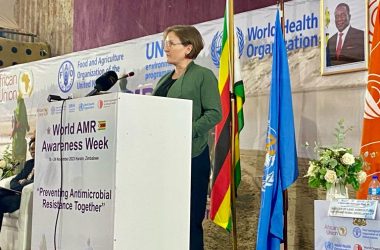ZIMBABWE should conduct a comprehensive surveillance research on sexually transmitted infections (STIs) in order to understand how big the problem of STIs in the country, a Ministry of Health and Child Care official has said.
This is coming at a time when the number of officially recorded cases for STIs in Zimbabwe is “just but a tip of the iceberg and those ones that are symptomatic continue to spread”.
Although isolated researches have been conducted these do not represent a national outlook, according to Anna Machiya, the National Coordinator STI Prevention and Condom Distribution in the Ministry of Health and Child Care.
Machiya was addressing a Science Café for members of the Health Communicators Forum Media in Harare recently.
Asked on whether there has ever been any surveillance in the country to estimate the magnitude of the challenge, Machiya said:
“Not that I remember from the time I was in the ministry. There have been bits and pieces of research that have been done, but it’s not a national problem. It doesn’t give us the national picture in terms of symptomatic STIs,” said Machiya.
 “And if you look at this slide, these are the ones shaded in yellow. And as you can see, it’s just a tip of the iceberg. And more numbers are recorded in females as opposed to males.
“And if you look at this slide, these are the ones shaded in yellow. And as you can see, it’s just a tip of the iceberg. And more numbers are recorded in females as opposed to males.
“But what is under this iceberg? This is what we don’t know. And these are symptomatic STIs. They constitute the majority of STIs,” added Machiya.
She said such a surveillance could give an indication as to how big the problem of STIs in the country is.
“And without data or surveillance on the magnitude of STIs, it is very, very difficult to really know what is happening. What we see now are those that then become sick and present at our facilities, and these are the STIs that we are able to capture. So, these ones that are symptomatic continue to spread, and this is one reason that also may fuel the spread of STIs,” said Machiya.
To be able to effectively detect symptomatic cases, Machiya said there is now talk of considering to move from a syndromic approach to an etiological approach, “where we also use specific laboratory tests to identify these STIs”. But the cost of doing such tests is quite high.
“So, there is cheaper point-of-care tests available on the market. And we are actually providing that service to clients or to people that present with STIs. So, we test for HIV, we also test for STIs,” she added.
 Some of the reasons that are dissuading infected people to present themselves for STI treatment include stigma and the attitude of health care workers which officials are working on.
Some of the reasons that are dissuading infected people to present themselves for STI treatment include stigma and the attitude of health care workers which officials are working on.
As such, the Health Ministry is conducting training programmes for its staff and sensitisation workshops, especially for all the different populations that are accessing services.
They have also developed Standard Operating Procedures (SOPs) that give guidance on how to deal with adolescent people younger than the ages of 18 and on how to treat clients when they present themselves to health facilities.
The ministry is also encouraging people to even put in complaints, provided feedback mechanisms and community-based community health centres and groups that also help in the feedback.
Feedback: cmwanawashe@marichomedia.com












